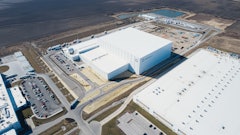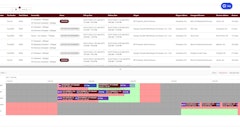
The second annual Cold Chain Council, hosted by Q Products and Services, brought together thought leaders from each part of the cold chain. The educational forum, held June 13, in Chicago, featured several panels, presentations and a roundtable discussion, and was moderated by industry veteran Michael Cole.
The forum’s first panel, “Delivering Fresh Margins in Today’s Complex Cold Chain,” included presentations from Gary Campisi, senior director of Quality Control, Walmart; Luke Gowdy, general manager, Sourcing Transportation, C.H. Robinson; and Rob Ondrus, director of Produce, Reinhart Foodservice.
Of particular interest was Campisi’s presentation describing the challenges in transporting fresh foods, specifically in regards to tropical fruit. The demand for such commodities like avocados, papaya, bananas, guava and mangoes has significantly increased in the last few years, presenting a number of shipping challenges.
Wal-Mart tripled it sales in mangoes in 2016 compared to 2015, and Campisi says some are predicting mangoes will eventually overtake bananas in sales.
Shipping tropical fruits in mixed loads is especially difficult because the cold chain requirements for tropical fruit limit compatibility with other products. Most tropical commodities require warmer transit temperatures no colder than about 50 degrees. Improper temperatures result in chill damage.
The retail giant currently is seeking additional solutions to its tropical fruit dilemma, hoping for further low cost technology in packaging, such as Q Products PalletQuilt, which was designed to protect individual pallets of produce commodities traveling in varying trailer temperature zones.
“We can only get by for so long with blankets and quilts and hoping for the best,” Campisi adds.
Presenters in the second panel, “Cross Border Capacity Crunch: Finding the Right Mix for Seasonal Demands,” included: Gary Olson, president of Brewery Operations, Minhas Brewery; Kelli Saunders, president and CEO, Morai Transportation; and Stephen Mollard, director of Intermodal, Canadian National. The panel provided great perspective on the challenges associated with securing temperature controlled capacity out of Mexico and into Canada. “Passive Thermal Protection provides equipment flexibility and protects the temperature integrity of the product” Saunders explained.
Also speaking was Brandon Clark, Global Transportation Manager at Amway. His presentation, focused on transportation challenges and opportunities in a global supply chain.
Jon Davis, meteorology team lead at Riskpulse, touched on a sometimes controversial topic—climate change—and its effects on the supply chain. Titled, “Climate Trends and Supply Chain Logistics: A Changing World,” the presentation explained how changes in weather patterns are creating both challenges and opportunities for logistics providers.
Davis discussed historical weather trends, data analytics and the solutions Riskpulse can provide in regards to weather and climate in the logistics world.
Riskpulse applies weather to things, beginning with raw data. Their solutions have played a big part in the agriculture and energy industries for years but are now seeing more applications throughout the supply chain.
Davis walked the audience through historical weather trends over the last 50 years, showing the globe’s warming trend and extreme weather.
“The spread has widened out, which is extremely important in logistics,” he notes.
The reason for this warming Davis explains is sea surface temperature anomalies. The anomalies indicate that the summer of 2017 will be one of the hottest ever, bringing increased risk of heat and humidity related transportation and shipment issues and an increased demand for temperature-sensitive products.
“With the more extremes in time, you get a huge variance regionally in what kind of temperature trends you tend to get,” he says.
Impacts of extreme weather trends include huge differences in trade lanes, but also bring potential for new openings throughout the year.
“Some of the biggest opportunities are now in shoulder seasons,” Davis adds. “Novembers are completely different than they used to be. The extremes that we see bring up opportunity, and it is amazing the new things can be done to earn cost savings.”
Q Products & Services will host the third annual Cold Chain Council on June 25, 2018.






























